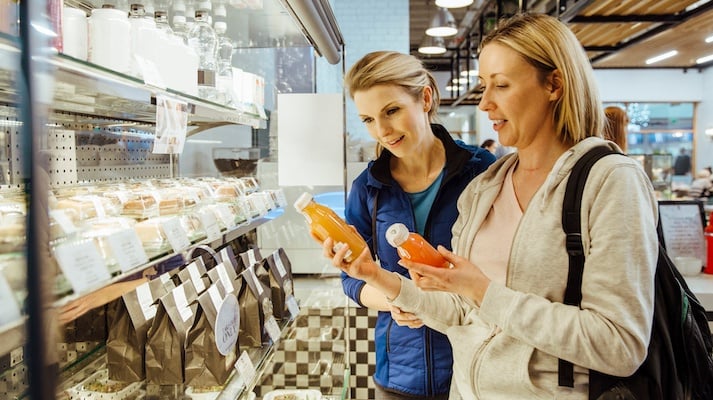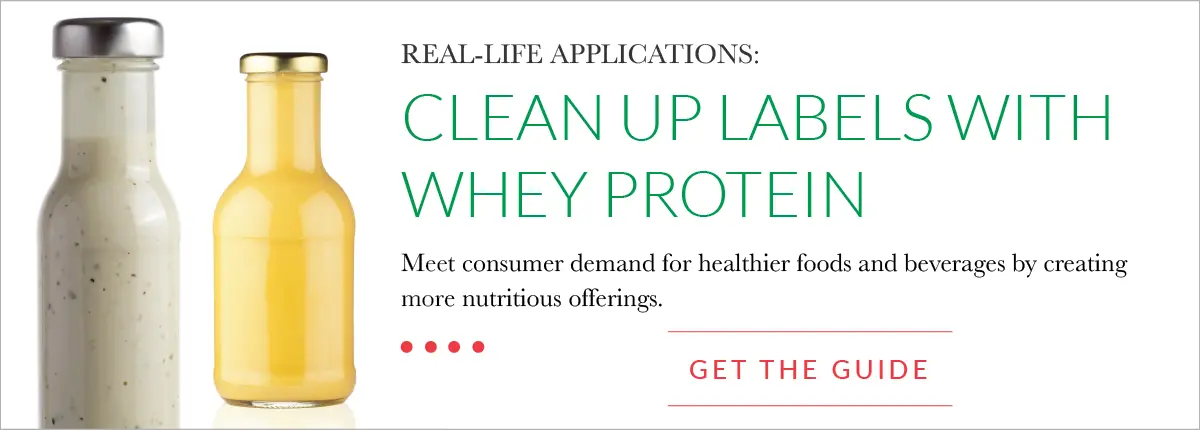
Clean eating is now mainstream as consumers seek to become better educated and are more conscious about the impact of “bad-for-you” ingredients on their health and overall wellness. More than 76% of consumers believe clean label foods are healthier than traditional foods.
While some are concerned about being able to pronounce all the ingredients that are in a product, others are concerned about what isn’t on the label. This segment of consumers look for products that are free from certain ingredients or attributes. It may seem like mincing words, but there are clear differences between the two.
The Difference Between Clean Label and Free-From Food
Some consumers consider clean labels and free-from labels to be one and the same, but that’s not necessarily always the case. Clean label products generally emphasize minimally processed foods and natural, simple ingredients that consumers recognize and are familiar with.
While there are different degrees of “clean,” for the most part, labels that feature fewer ingredients that consumers can recognize and pronounce qualify. That means that preservatives and artificial additives, stabilizers and other synthetic, chemical-sounding ingredients generally end up on the “no-no” list.
RELATED: Get to Know the Clean Label Consumer
Free-from foods, however, generally focus on characteristics that may be absent from a product such as fat-free, calorie-free, GMO-free, gluten-free, grain-free, etc.
Consumers who are attracted to product packaging with free-from claims may already have a diagnosed health concern, such as a heart condition or diabetes. These concerns — possibly combined with a doctor’s recommendation — prompt them to look for foods that claim to be cholesterol-free, sugar-free or low-sodium, for example.
Technically, free-from foods may still contain a laundry list of unfamiliar ingredients that don’t qualify as clean label. On the other hand, a clean label product may be high in fat, calories, cholesterol and other attributes that are concerning to some consumers.
The Challenge for Food Manufacturers
Clean labels and free-from products do have some things in common. Trips to the grocery store and restaurants take just a bit longer as consumers scrutinize labels on products and interrogate servers about the ingredients used to prepare food.
Building consumer trust and meeting the demand for both has been a challenge for some food manufacturers that want to maintain the appealing attributes of their original products. Improving nutritionals and eliminating artificial ingredients can easily lead to a product ending up on a different kind of “free-from” list… free from flavor and free from an appealing texture.
If there’s one thing consumers aren’t willing to give up, it’s the pleasure of enjoying flavorful, satisfying food that engages the senses.
As any food scientist knows, reformulating products is not as easy as switching out one ingredient list with another. Research and testing can take months to produce quality results that maintain original flavors and textures. Adding to the challenge is volatile pricing among many natural ingredients. Just because artificial ingredients can often be replaced with their traditional counterparts (e.g., eggs, butter, cream, etc.), doesn’t mean the solution will be financially viable in the long-run.
Sustainable, All-Natural Ingredient Solution
A sustainable alternative to volatile premium dairy ingredients that are often high in fat and calories is all-natural functional whey protein. Easily recognized by consumers as a product derived from the centuries-old tradition of cheese-making, whey protein offers the nutritional benefits of lower fat and calories over traditional forms of dairy and eggs.
Compared to cream, butter, milk or eggs, whey protein requires no refrigeration and is shelf-stable. And, of course, it’s the perfect substitute for those “forbidden” ingredients being shunned by consumers. Adding to the appeal of whey protein in formulations is its nutritional appeal and ranking as a superfood.
Unlike commodity whey protein, Grande Bravo® functional whey protein offers food formulators impressive viscosity and gelation properties, and can maintain or improve flavor profiles in a wide variety of applications from soups, sauces and dips to salad dressings, coatings, bakery goods, ice cream and much more. Additionally, it’s sourced and produced in the heartland of the United States using zero chemicals.
Take the step to explore how Grande Bravo can be used as an alternative to artificial additives or high-cost traditional ingredients in your formulations. Talk with our team of food scientists. They’ll demonstrate its uses and help determine the best approach to formulating your application, resulting in faster speed to market and more products on consumers’ tables.
To aid in your conversation and to understand the full range of clean-label benefits and functionality of whey protein in many applications, download our How Whey Protein Helps Food & Beverage Manufacturers Clean Up Their Labels guide below.





